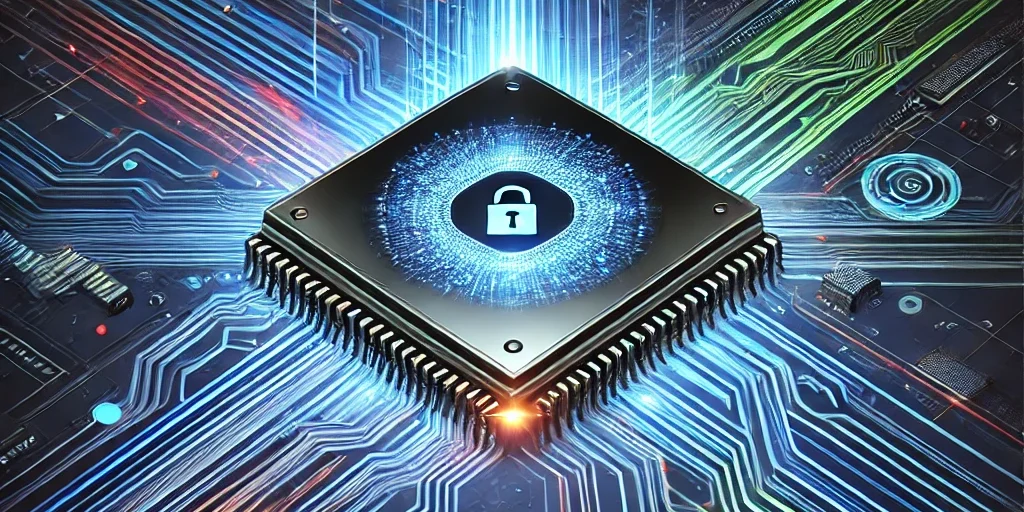The security of cryptographic systems goes far beyond mathematical algorithms. Often, what appears to be a simple computational operation inadvertently reveals valuable information through its power consumption. In this article, we explore power analysis attacks, examining both the simple (SPA) and differential (DPA) methods. Get ready to journey behind the scenes of cryptographic devices and discover how energy consumption patterns can expose hidden secrets!

What Are Power Analysis Attacks?
Power analysis attacks are a type of side-channel attack that exploits the variations in a device’s power consumption during the execution of cryptographic operations. Each operation—whether it’s a simple multiplication or a more complex calculation—demands a specific amount of energy. This “signature” can be captured by instruments such as oscilloscopes, allowing an attacker to recover confidential information, such as secret keys, without breaking the algorithm mathematically.
Simple Power Analysis (SPA)
How It Works
In the Simple Power Analysis method, the attacker visually examines the power consumption waveforms generated during the algorithm’s execution. For example, in the well-known “square and multiply” algorithm, the multiplication operation is executed only when a specific bit of the key is 1. By observing the peaks and variations in the waveform, one can distinguish between a “square” operation (which consumes less energy) and a “multiplication” operation (which demands more energy).
Extracting the Secret Key
Imagine having a power trace where the higher peaks indicate multiplication operations. These peaks correspond to the 1 bits in the secret key. Thus, if the trace displays an alternating sequence of square and multiplication operations, the attacker can reconstruct the binary sequence representing the key used in the encryption process. This technique is powerful because it does not rely on complex mathematical analysis but rather on a careful observation of the device’s physical behavior.
Differential Power Analysis (DPA)
Taking It One Step Further
While SPA depends on a direct visual analysis of the waveforms, DPA employs advanced statistical methods to exploit subtle variations in a large set of measurements. Even if each individual trace does not reveal enough detail, the combined analysis of hundreds or thousands of traces can highlight patterns and correlations that point to the correct key.
The Process in Detail
- Data Collection: The attacker repeatedly runs the cryptographic algorithm, capturing power consumption traces for different inputs (e.g., plaintexts and their corresponding ciphertexts).
- Model Construction: Based on the known algorithm (such as using an S-box with XOR operations), the attacker computes intermediate values for each possible input using hypotheses about the secret key.
- Trace Partitioning: The traces are divided into two groups according to a specific bit of the intermediate values—one group where the bit is 0 and another where the bit is 1.
- Statistical Analysis: By calculating the average of the traces in each group and then taking the difference between these averages, the attacker obtains what is known as the DPA value. If the key hypothesis is correct, this difference will be significantly larger, highlighting the correct key bit.
Advantages of DPA
One of the major benefits of DPA is that it does not require high precision in every single measurement. With a sufficiently large number of traces, even small discrepancies can be magnified through statistical analysis. This approach makes DPA a powerful tool, capable of overcoming various physical countermeasures—provided the attacker has physical access to the device for a sufficient period.
A Practical Example: Cracking a 128-Bit AES Key
Consider a scenario where the attacker needs to uncover a 128-bit AES key. The process can be broken down into the following steps:
- Byte Division: The key is divided into 16 bytes, and for each byte, there are 256 possible values.
- DPA Value Calculation: For each of the 4,096 (256 × 16) possibilities, the attacker calculates the DPA value.
- Peak Identification: The hypothesis that produces the highest peak in the trace difference is considered the most likely candidate, pointing to the correct value for that byte of the key.
Despite the vast amount of data and the number of calculations involved, DPA proves extremely effective, allowing an attacker who collects hundreds to thousands of traces to reveal the secret key with high probability.
Countermeasures and Best Practices
Given the potential risk posed by these attacks, developers of cryptographic devices implement various strategies to mitigate the threats:
- Constant-Time Operations: Ensuring that all cryptographic operations consume the same amount of energy and time, regardless of the input data.
- Randomization and Masking: Introducing noise or random data during algorithm execution to make it harder to correlate the traces.
- Blinding Techniques: Applying mathematical transformations that scramble the data before processing, reducing the possibility of inference from power consumption.
These countermeasures are essential to enhance the resilience of systems against side-channel attacks, ensuring data integrity and the confidentiality of cryptographic keys.
Conclusion
Power analysis attacks demonstrate that in the realm of information security, “power” is literally in the details—specifically, in the energy consumption patterns of devices. Both SPA and DPA exploit the relationship between power consumption and cryptographic operations to reveal secrets that should otherwise be well protected. Understanding these techniques not only sheds light on the vulnerabilities of modern systems but also guides the development of more robust and secure solutions. In an increasingly connected world, no detail is too small to be overlooked—even the seemingly insignificant electrical signals.
Stay informed about the latest practices and breakthroughs in cybersecurity to ensure that your systems remain safeguarded against these sophisticated attacks.
To further explore related topics in hardware security, check out these articles:
- “Side-Channel Attacks: Exploring Vulnerabilities in Modern Cryptography”, where we delve into power analysis, electromagnetic emissions, and other side-channel techniques that complement power analysis attacks.
- “Physical Attacks: Unveiling Hardware Security Threats”, which examines invasive and non-invasive attack methods that can compromise hardware security.
- “Physical Attacks on Hardware: Unveiling Threats and Defense Strategies”, highlighting effective countermeasures against physical and side-channel attacks.
Together, these articles provide a comprehensive understanding of hardware vulnerabilities and the strategies to defend against them.





Pingback: FPGAs in Security and Trust: Innovations and Advantages - FortShield: Security for Professional Developers